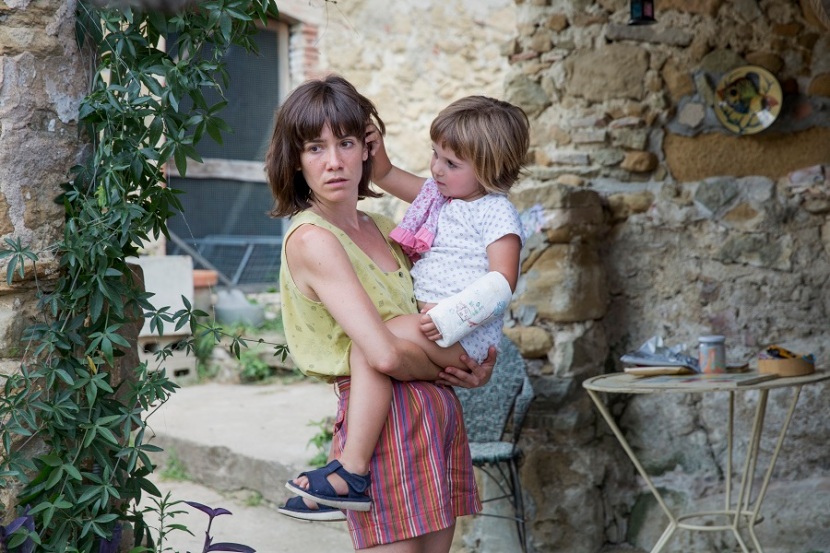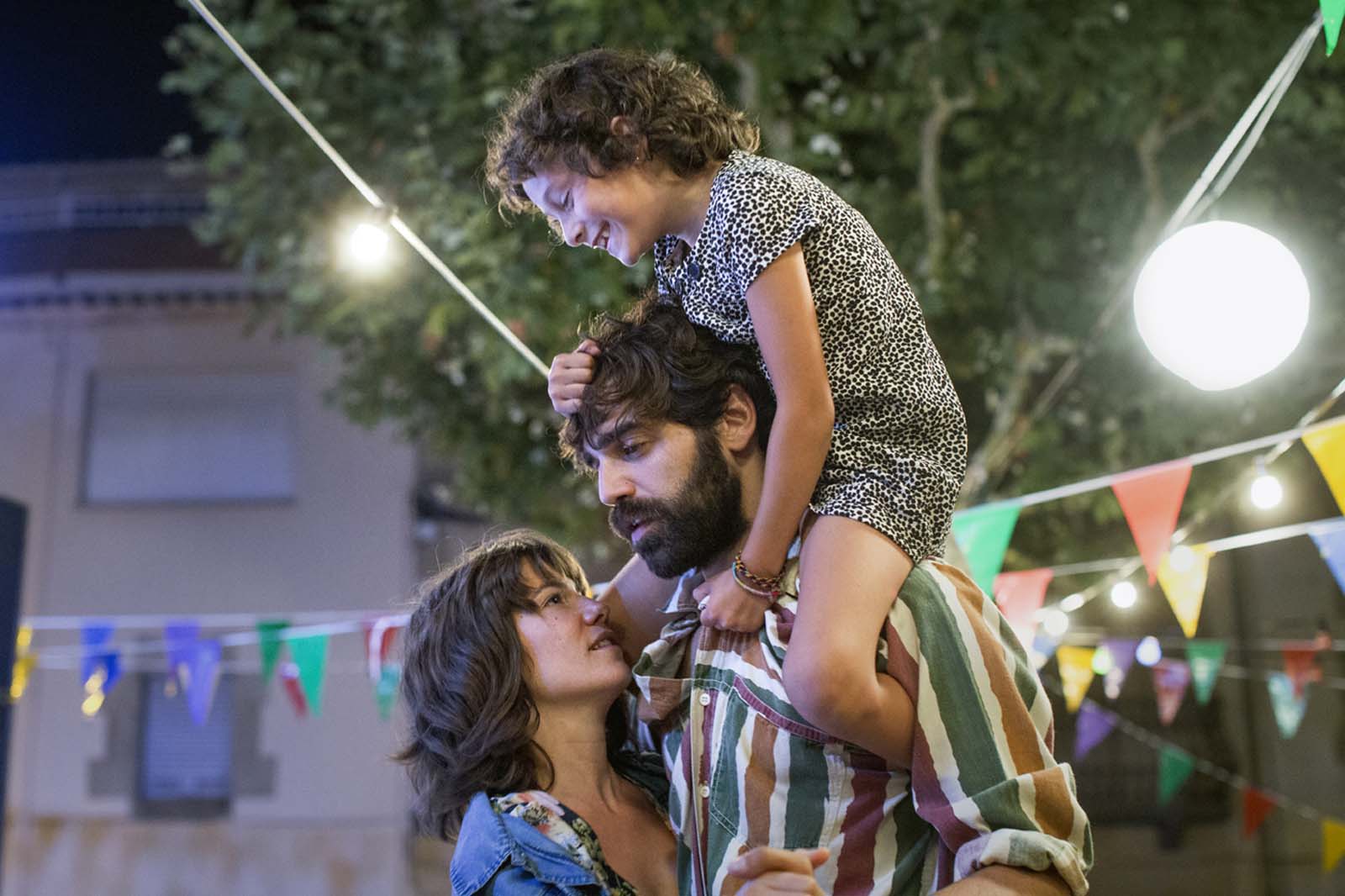Losing Things and Replacing Them: Carla Simón
Stories that seem simple at first are sometimes told so beautifully that you cannot put your finger on why it affects you so much. Written by Carla Simón and based on her own life, “Summer 1993” is one such movie. It’s about a 6-year-old Frida loses her mother and moves in with her uncle and his wife; that summer, Frida both tries to cope with her loss and to adapt to her new family. The movie received the Best Feature Film at Berlin Film Festival. We talked to the director who is as simple, sincere, sensitive and gentle as her movie about the confusion of being a kid and memories.
When did you decide to make a personal movie about your childhood?
When I was studying in London, I’ve made a short film called Lipstick. It was about two little siblings whose grandmother is dead. So I realized that children facing death was very interesting to me. Also in London, you know, I was away from home and my family so I thought a lot about my personal childhood memories. And before going to London I have written the story of my mom and then I realized that it was very difficult for me to talk about something that I didn’t know that much. So I started to talk about the first summer I spent with my new family. So this is how it started.
I think it’s a very brave choice for a debut film to have children in the leading role. Laia Artigas (Frida) and Paula Robles’s (Anna) performances were absolutely stunning but I wonder what it was like to work with 6 and 4 years old girls in a movie set. Was it difficult to work with them?
For me it was very difficult and intense. When you work with kids, it’s like everything is focused on them somehow. First we tried to define the girls’ characters in terms of personality so this way they don’t have to create a character and they could be themselves playing the scenes on the script. Also it was very important when we put them together. We tried different combinations for the relationship between Laia and Paula. For example, we tried one in which they became friends but it didn’t work. (laughs) It was important that they care about each other but on the other hand there is the duality. The age difference was important as well. So we spent a lot of time together with the girls. In a way I wanted to create the relationships by spending time, being in the character, doing the everyday life scenes like going for a walk, do shopping, cooking etc. Also we went to the place where we shoot. At this point a coach came in for the girls and together we rehearse all the specific scenes. This way, the girls knew what we are going to do. It was important because we had only 6 – 8 hours to shoot with the girls in a day, it’s not much for a movie set. We didn’t want any surprises in the set.
How were the shootings?
Well, they never read the script because the little girl didn’t even know how to read (laughs). If they needed to say something very specific that I really wanted them to say, I talked during the take and guide them like “Can you repeat that?” etc. And there were some scenes that they were freer so that they could improvise.
Can we say that most of the parts with the children are improvisations?
Well, I wouldn’t say it was totally improvised because it was very controlled. For example, for the scene where Laia was pretending to be her mom and to be smoking, I played with Laia and told her that I was her mom and saying the exact things that she would say later. And during the shoot I was telling her “Do you remember that day when I was playing your mom? Now you have to imitate me”. So it was the way of guiding the improvisation.

Do you get along with children generally?
Yes! I always work with children. When I was student in the summer school I monitored the children, and then in London I started to teach cinema to kids, and I did it too in Barcelona. So I was always in contact with them.
How was Laia and Paula’s reaction to the movie?
The first time they saw the movie, it was in Berlin. There were so many people in the room and there was this big screen. For Laia it was very special because we never shoot in the chronological order so suddenly she realized the meaning of the film and she even understood the psychological journey that she went through. And for Paula, she was remembering almost everything we shoot. But for example when she saw the scene where she was crying in the river, she said “OK I cried but I didn’t cry that much!” (laughs). And second time Paula sees the movie, she fell asleep! (laughs)
Is there any difference between adults and children in the way they watch and make sense of your movie?
For me, it’s a movie about children but for adults. But it’s very interesting that children also watch it because maybe they don’t understand everything but they can get little things. It’s not maybe for very little children but it’s good for teenagers. It’s interesting that some of the teenagers who saw the movie told me that they found resemblance with their own childhood.
When you compare kids to the adults in terms of adapting the realities of life, are they better or worse?
It was important for me to show that kids are very clever and intelligent to understand very complex situations. Sometimes we adults think they won’t understand because they are kids, but no, they do. Also, they can adapt to new situations more easily than the adults because they are “new” in life and they can start over more easily. I always think that if I were older when I lost my mom, I think it would be more difficult. I was so little, they told me “OK this is your new family” and that was it. But on the other hand, for kids, it’s difficult to manage their emotions. They don’t have the necessary tools to understand why they are feeling that emotion. As adults, we can analyze situations and our own feelings and give meaning to what happened. In the case of Frida, she’s angry because her mom died. But she doesn’t know why she feels the anger.
We got the signals that Frida’s mother had died from AIDS but it’s never articulated in the film. Why did you choose to keep that area open to comment?
First of all, it was a taboo back then for everyone, it still is a bit actually. And for me, I wanted the film to be from Frida’s point of view because when I was that age, nobody told me until I was at a certain age that my mom had died from AIDS. People in Spain were very afraid of AIDS because it was a new disease and they didn’t know what to do. Also I didn’t want this to be a main theme of the film because it’s an important issue and it could easily become the main theme. I just wanted to give the context and use it as a background.

In autobiographical works like yours, we always wonder how much of it is personal memory and how much of it is fiction?
The thing is you cannot remember your childhood exactly. The memories are confused. I don’t have specific memories but I remember feelings, emotions and images. So what I did was to talk to my adoptive parents about anecdotes and things I remember. I also scanned all of photos from my childhood. I put them all together; photographs, memories and talks and in order to give it a form of a film, I had to invent some things. There are some situations I remember they had told me, but I don’t remember why I acted like that. So I read some books to understand why kids behave like I did in a situation like that. I also talked a lot about it with my adoptive mom because she knew why I behave like this. It was a way to build a psychological journey of Frida. So it was a mix of fiction and reality.
You said you remember the emotions. Can you tell us an example?
I remember that I was feeling guilty because I didn’t cry when my mom died. So my adoptive mom explained why the last scene happened – because it’s actually happened.
As we watch the film, we felt like We’re watching someone who tries to go through a trauma. was this movie a personal recovery for you?
Not really. I tried to explain a story from my life and I was very lucky to live in a family where we talked about it. I didn’t have the feeling like I needed to express these feelings to heal me. I just wanted to talk about that because it was a way to understand it better. For me, the whole process was very beautiful because I could see how my new parents felt, how my sister felt, why I did what I did. It was good to understand and reconnect with this story.
Do you think this is a happy ending movie?
Yes! Actually we shoot the last scene twice. At the first one, the girl didn’t cry. I said it’s not the end that I wanted. And I tried to convince myself that maybe it’s ok that she didn’t cry. But then we talked to the producer and she told us to try it one more time. So we shot again and she cried. When I watched the two versions and I thought it was a happier ending with the crying version.
We’re curious about the inspiring figures in your cinema. Could you tell me a few names that influence your cinematic language?
“Cria Cuervos” by Carlos Saura and “Ponette” by Jacques Doillon influenced me a lot. I like them because they show that kids are not just innocent but also they have dark side. They show the psychology of a child very well. I also love “Corpo Celeste” and “Le Meraviglie” by Alice Rohrwacher. Claire Denis, Víctor Erice and Lucredia Martel are the other directors I love so much.